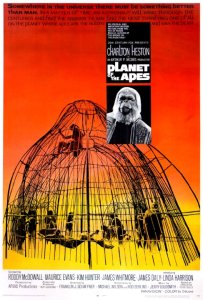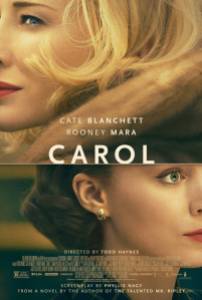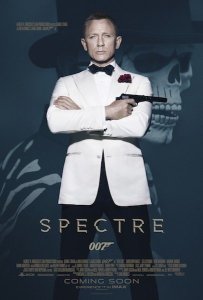Editor’s Note: The following review was an assignment for a class in which we were tasked to review something ephemeral, something that was unusual and could not be checked by anyone in the class. This is a concert review of Mikal Cronin’s performance at The Prairie Center for the Arts in Schaumburg, IL on 2/21/15.
Schaumburg, Illinois is a Northwestern suburb of Chicago. It’s home to Woodfield Mall, the 11th largest shopping mall in America. And my grandmother lives there. So there’s that.
But Chicago it’s not, and it’s not exactly awash with culture. Yet performing in Schaumburg is Mikal Cronin, an indie garage rocker with a penchant for fuzzy guitar pop and orchestral swells, not from the Midwest but from Laguna Beach, CA. Currently he’s been known to play major festivals, but prior to this show his live act had typically reserved for dingy clubs with names like Subterranean.
But dangling at the start of Cronin’s 2015 touring schedule was a date at the end of February, several months removed from any other shows on his calendar, not to mention the upcoming release of his third album MCIII. On this night, Cronin would playing at a place called The Prairie Center for the Arts? In Schaumburg? Something was up.
When you drive up to The Prairie Center for the Arts (free parking!), the building looks like a suburban middle school. It has a boxy brick façade, large ornamental lettering on its front wall and a pretty little garden complete with a retention pond, trees and a grassy walking area lined with stone. Inside is a long hallway that empties out into a miniature art gallery. A bar has been set up near the door, and people who certainly don’t look dressed for a rock concert mull about sipping wine or cocktails.
Things get weirder. At the entrance to the theater itself are two charming old ladies in their 60s or 70s who hand you a program (a program! At a garage rock show!) and offer to show you to your seats. It contains a bio of Cronin that confirms, yes, you are in the right place and that the performer you are about to see is in fact an indie rock star who plays fuzzy, melodic guitar pop and not some other local artist who also happens to spell their first name “M-i-k-a-l.” Other upcoming acts at the Prairie Center include The Reduced Shakespeare Company and the Wellington International Ukulele Orchestra.
The stadium-seating auditorium can’t hold more than a couple hundred people, but tonight’s audience can’t be more than just a few dozen. Naturally, everyone is seated. This is a rock and roll show after all.
With no opener, Cronin comes out alone in a bluish-purple tie-dye shirt carrying a 12-string acoustic guitar. Normally his hair hangs below the small of his back obscuring his eyes, but today it’s cut short to the point that he’s almost unrecognizable. This is still unusual, but once he starts playing, things finally seem to have settled down into something beautiful.
Cronin played several acoustic versions of tracks like “Peace of Mind” and “Don’t Let Me Go,” (which he rarely performs live) a cover of Big Star’s “Ballad of El Goodo” (which he informs is the first time he’d ever played in concert), as well as a new song from his yet to be released album, “I”ve Been Loved.” Separated from the albums orchestral swells, Cronin’s voice is additionally frail, vulnerable and affecting. His intricate guitar strumming on his 12-string is rich and soulful, and to close out the song he even whistles the melody in a way that’s far more lovely and intimate.
Because he can’t hide behind his hair, and perhaps because everyone in the audience is sitting instead of moshing, Cronin seems sheepish and a little nervous on stage, and you can feel that nervous excitement in the crowd. This was already a show that we would’ve never expected, and now he’s delivered with this unique set. There’s even an intermission, after which Cronin will return with a full band.
Cronin explains this is one of the first times the band has played together live, and likely the first time they’ve performed several of these songs. And it shows. While the band is loud, and Charlie Moothart on guitar still shreds, their act feels unpolished and not fully together.
It doesn’t seem to matter though that this may just be a practice gig. Everything surrounding the occasion seemed special and unpredictable. In demand of an encore, Cronin and company come back and play the only other song they know, a cover of Wreckless Eric’s “Whole Wide World,” a scratchy two-chord, piss-easy song that absolutely rocks. What could be better?
The idea of a secret show isn’t unique. Rock stars from Trent Reznor to Jack White to countless more have managed shows far more sensational, unusual and ephemeral than this one, and they’ve done so with sets that to the small crowd in attendance are just as distinctive and unique compared to anyone who might see them in a stadium. But many of those gigs are spur of the moment surprises designed for super fans that happen to be in the right place at the right time and can follow all the breadcrumbs necessary to attend. Jack White will transform an abandoned basement in London into a makeshift medical facility as a way to surprise his fans, but not a performing arts space in the suburbs of Chicago.
Mikal Cronin’s Prairie Center for the Arts set was like a secret show hidden in plain sight. To this day I can’t figure out why he chose to play it or why he did so in Schaumburg. No one who didn’t already live in the ‘burbs bothered to drive all the way from the city, but those who did saw something different.
As a thank you, Cronin offered everyone who came a rough, unreleased, 7-song EP of tracks downloadable from an exclusive SoundCloud link simply titled, “Mikal Cronin Loves Schaumburg, IL.” Such a show was an artifact in itself, but what does it say that now I had a collection of music that maybe only the 50 people in this audience would ever hear? Maybe it just felt nice because the elderly ushers gave us a card with the download link as we walked out.




 On paper, “The Passenger” sounds like a thriller. But it’s an introspective examination of the self, an existential road trip movie with a spy element and a hint of danger. This is the way Michelangelo Antonioni does cloak and dagger espionage.
On paper, “The Passenger” sounds like a thriller. But it’s an introspective examination of the self, an existential road trip movie with a spy element and a hint of danger. This is the way Michelangelo Antonioni does cloak and dagger espionage.
 The paradox of “Rogue One: A Star Wars Story” is that it’s somehow tonally and thematically separate from the original “Star Wars” films but pays even more homage to the original trilogy than even “The Force Awakens,” amazing, since that movie is essentially a remake of “A New Hope.”
The paradox of “Rogue One: A Star Wars Story” is that it’s somehow tonally and thematically separate from the original “Star Wars” films but pays even more homage to the original trilogy than even “The Force Awakens,” amazing, since that movie is essentially a remake of “A New Hope.” Watching “Planet of the Apes” today is like trying to sway a climate change denier or a Creationist: it’s not going anywhere and after a while it gets pretty tiring.
Watching “Planet of the Apes” today is like trying to sway a climate change denier or a Creationist: it’s not going anywhere and after a while it gets pretty tiring. Rooney Mara as Therese Belivet in Todd Haynes’s “Carol” has perky, rosy makeup, frayed bangs beneath a plain black hair band, cute plaid outfits and a checkered fall hat. She looks like one of the toy dolls in the department store where she works. Enter Cate Blanchett as Carol Aird, who wears a movie star aura with a giant coat of golden fur, a stylish red French cap and later in the car an elegant green shawl to keep her looking perfect.
Rooney Mara as Therese Belivet in Todd Haynes’s “Carol” has perky, rosy makeup, frayed bangs beneath a plain black hair band, cute plaid outfits and a checkered fall hat. She looks like one of the toy dolls in the department store where she works. Enter Cate Blanchett as Carol Aird, who wears a movie star aura with a giant coat of golden fur, a stylish red French cap and later in the car an elegant green shawl to keep her looking perfect. Do we need James Bond in 2015? After 2013’s incredible “
Do we need James Bond in 2015? After 2013’s incredible “